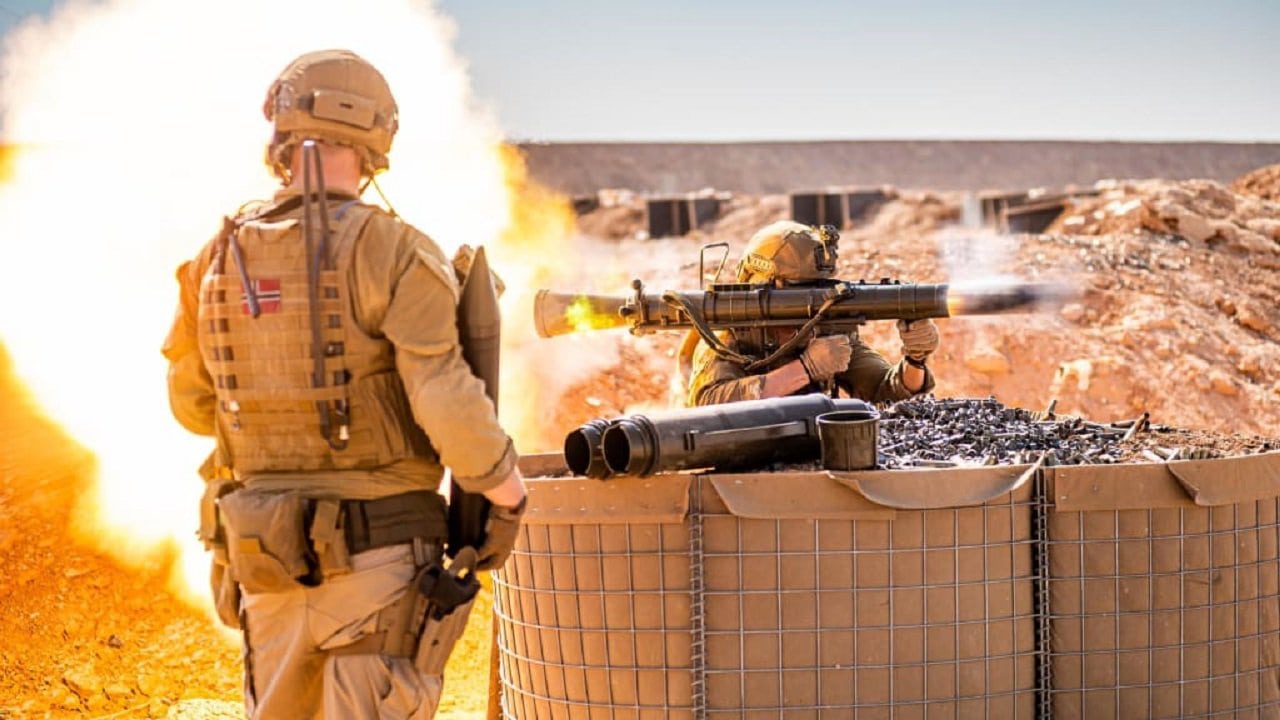Back in May 2022, I wrote an article on the Swedish-made Granatgevär (grenade rifle) m/48.
Better known to the English-speaking world as the Carl Gustaf 84mm recoilless rifle.
At the time, I noted that while it hadn’t racked up as big a kill tally in the Russo-Ukrainian conflict as, say, the TB Bayraktar drones or the Javelin missile, the Carl Gustaf had undoubtedly started to make its own mark against the Russian forces invading Ukraine.
The weapon’s effectiveness was graphically demonstrated by Ukraine’s Kharkiv Territorial Defense Forces, who used it to destroy a T-90M main battle tank, arguably the most sophisticated MBT the Russians have deployed in Ukraine.
So how has the Carl Gustaf performed on the Ukrainian battlefield since then?
What some call it a rocket launcher or a ‘bazooka’, this weapon of war is truly fearsome – and Putin knows it.
Carl Gustaf: Taking the Recoil Out of the Rifle
First we need to ask, just what the heck is a “recoilless rifle,” anyway?
The phrase sounds like a violation of the laws of physics. Even a mere 7.62x54mmR rifle generates plenty of recoil, so what should we expect from one with an 84mm bore?
Well, Times Mojo tells us: “The propellant gasses are directed backward, counteracting the weapon’s recoil, making it ‘recoilless.’ The weapon, which is basically a hollow tube with a gripstock and trigger, has spiral rifling on the barrel to impart spin stabilization on the round as it exits the barrel. Hence the name recoilless rifle.”
King Carl’s Namesake: Early History and Specifications
Originally inspired by WWII anti-tank weapons such as the American Bazooka and Wehrmacht Panzershreck, the Carl Gustaf 84mm began development in 1946 and officially entered into operational service with the Swedish Army in 1948.
The weapon was named for King Carl X Gustav (1622-1660), who conferred naming privileges upon the weapon’s original manufacturer, Carl Gustafs Stads Gevärsfaktori (Rifle Factory of Carl Gustaf’s Town).
The weapon is now in its fourth iteration, the M4 — and it is currently manufactured by Saab Bofors Dynamics. (If the name Bofors sounds familiar, it should, thanks to the iconic WWII-era Bofors 40mm anti-aircraft gun.)
The M4 variant of the m/48 weighs 15 pounds, making it way more user-friendly than the original M1 design’s 31 pounds. (I imagine the latter version generated a goodly amount of business for Swedish chiropractors and masseuses.) Its length is 37 inches.
The barrel generates a muzzle velocity of 750 to 840 feet per second, with an effective range of 1,310 feet against moving vehicles and 1,600 feet against stationary vehicles. This can be pushed up to an amazing 6,600 feet through the use of rocket-boosted laser-guided ammunition.
Some of the more typical ammunition types include the FFV551 HEAT (High Explosive Anti-Tank) or the FFV651 HEAT rounds, the latter of which employs a stand-off probe for the fuse to improve performance against reactive armor.
Sparkar fortfarande röv i Ukraina (Still Kicking You Know What in Ukraine?)
In a word, ja.
A little over a month after my initial Carl Gustaf piece was published, Peter Suciu wrote an article describing the Swedish government’s decision to send a weaponry package to Ukraine “valued at around 500 million Swedish crowns ($49 million).”
In addition, as noted by reporter Tristin Hopper in yesterday’s edition of The Windsor Star, the Canadian government recently donated 100 of the Gustafs to Ukraine, along with 2,000 rounds of ammunition.
The weapon has surely contributed to the horrific death toll that Russian tank crewmen have sustained in the year-old conflict, a death toll that will certainly continue to grow.
Christian D. Orr is a former Air Force officer, Federal law enforcement officer, and private military contractor (with assignments worked in Iraq, the United Arab Emirates, Kosovo, Japan, Germany, and the Pentagon). Chris holds a B.A. in International Relations from the University of Southern California (USC) and an M.A. in Intelligence Studies (concentration in Terrorism Studies) from American Military University (AMU). He has also been published in The Daily Torch and The Journal of Intelligence and Cyber Security.

